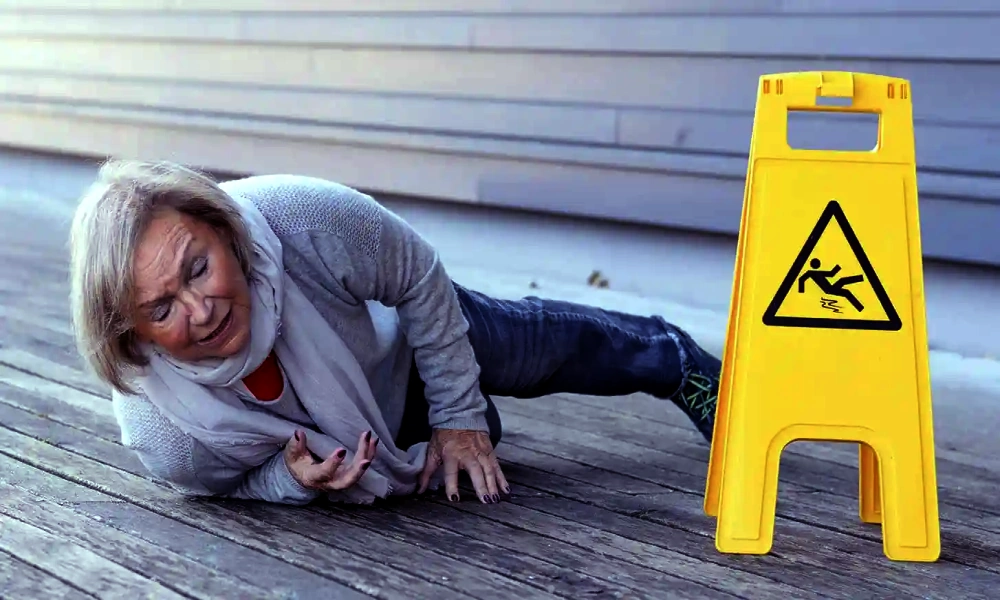What Is the Average Payout for a Slip and Fall Lawsuit in Texas?
(Introduction): If you’ve been injured in a slip and fall accident in a Texas grocery store, apartment complex, or on someone else’s property, you are facing medical bills, lost work, and significant pain. It’s natural to wonder: “What is the average payout for a slip and fall lawsuit in Texas?”
Here is the direct, honest answer: There is no “average” payout.
This isn’t a vague “lawyer answer.” It’s the truth. The value of a case involving a sprained wrist that heals in six weeks is thousands of dollars. The value of a case involving a shattered hip that requires multiple surgeries and causes a permanent limp is hundreds of thousands, or even millions, of dollars.
Averaging these two cases gives you a number that is meaningless for your situation.
A much more useful question is: “What are the critical factors that determine the value of my slip and fall case?”
The value of a slip and fall claim is not guaranteed. Unlike some car accidents where fault is clear, a slip and fall case is a complex legal battle. Your payout depends entirely on your ability to prove three things: liability, damages, and fault.
Factor 1: The Single Biggest Hurdle: Proving Negligence in Texas
This is the most important part of your case. If you cannot prove the property owner was negligent, your payout is $0.
In Texas, this is called “Premises Liability” law. To win your case, you must prove that:
- A dangerous condition existed on the property (e.g., a spilled liquid, a broken stair, poor lighting in a hallway).
- The property owner (or their employee) knew about the hazard, or should have reasonably known about it.
- The owner failed to take reasonable steps to fix the hazard or warn you about it.
- This failure directly caused your injuries.
This is much harder than it sounds. If a customer spills juice in a grocery aisle and you slip on it 10 seconds later, the store is likely not liable because they had no “reasonable” time to discover it. But if that same spill was left on the floor for 45 minutes, a jury would likely find that the store should have known about it and cleaned it up.
How this impacts your payout: A case with strong evidence (like video footage showing a spill was ignored) is worth vastly more than a case where it’s just your word against theirs.
Factor 2: The “Texas 51% Rule” and How They Will Blame You
The second you file a claim, the property owner’s insurance company will start working to blame you. This is a direct tactic to reduce or eliminate your payout.
They will ask:
- “Were you on your phone?”
- “Were you running or not paying attention?”
- “Were you wearing inappropriate shoes (like high heels)?”
- “Did you ignore a ‘Wet Floor’ sign?”
Why do they do this? Because of the Texas “Modified Comparative Fault” Rule (the 51% Bar).
- This law instructs a jury to assign a percentage of fault to both parties.
- Your final settlement is reduced by your percentage of fault. For example, if your damages are $100,000 but you are found to be 20% at fault (e.g., you were texting), your payout is reduced to $80,000.
- Here is the “Bar”: If you are found to be 51% or more at fault, you are legally barred from receiving any money at all. You get $0.
A high-value payout is only possible if you can prove the other party was mostly at fault (50% or less).
Factor 3: Calculating Your “Damages” (The Actual Value)
Once you prove the owner was negligent and that you were not primarily at fault, the value of your case is calculated by adding up all your losses, known as “damages.” These fall into two categories.
1. Economic Damages (The Tangible, Billable Costs)
These are the exact, out-of-pocket financial losses you have suffered. A serious case must have serious economic damages.
- Past Medical Bills: Every dollar for the ambulance, ER visit, hospital stay, MRIs, X-rays, and doctor appointments.
- Future Medical Expenses: This is a huge factor in high-value settlements. If your fall results in a knee injury that will require a full replacement in 10 years, the cost of that future surgery is included in your claim today.
- Lost Wages: The paychecks you missed while you were recovering.
- Loss of Future Earning Capacity: If you can no longer work, or can only work at a lower-paying job, this calculates the income you will lose over the rest of your career.
2. Non-Economic Damages (The Intangible, Human Costs)
This is compensation for how your injury has personally affected your life. This is where an experienced lawyer makes the biggest difference.
- Pain and Suffering: Compensation for the physical pain, discomfort, and trauma you have endured.
- Mental Anguish: The anxiety, depression, sleeplessness, or PTSD resulting from the fall.
- Physical Impairment: Compensation for the loss of your ability to do things you once enjoyed. Can you no longer play golf, pick up your child, or garden?
- Disfigurement: Compensation for any permanent scarring from the fall or resulting surgeries.
Settlement Payout Examples: Why “Average” Is a Myth
Let’s look at three different Texas slip and fall scenarios to see why the values are so different.
- Scenario 1: The Minor Sprain
- Facts: A person slips on a small puddle at a gas station, sprains their wrist, and misses one week of work.
- Evidence: No video, but an employee admits they forgot to put up a sign.
- Damages: $4,000 in medical bills, $800 in lost wages.
- Potential Payout Range: $7,000 – $15,000. It’s on the lower end because the injury is not permanent and the damages are low.
- Scenario 2: The Serious Fracture
- Facts: An elderly person slips on a badly cracked, uneven sidewalk at an apartment complex. They suffer a complex hip fracture requiring surgery and a metal rod.
- Evidence: Photos show the sidewalk has been broken for months; emails show other tenants had complained about it (clear negligence).
- Damages: $120,000 in medical bills, $15,000 in lost wages, plus future physical therapy. The victim now walks with a permanent limp (Physical Impairment).
- Potential Payout Range: $250,000 – $500,000+. The high value comes from severe damages and very strong proof of negligence.
- Scenario 3: The Catastrophic Injury
- Facts: A customer in a large hardware store is hit by an improperly stacked, falling object (a “falling merchandise” case, similar to slip and fall). They suffer a Traumatic Brain Injury (TBI).
- Evidence: Clear in-store video footage.
- Damages: Millions in future medical care, as they can no longer live independently. Total loss of all future earning capacity.
- Potential Payout Range: $3,000,000 – $10,000,000+.
Averaging these three cases would give you a number over a million dollars, which is completely useless for the person in Scenario 1.
Frequently Asked Questions (FAQ)
Q: What should I do immediately after a slip and fall in Texas? A: 1. Report it to the manager or property owner immediately. Get their name. 2. Take photos of the exact hazard that made you fall (the spill, the ice, the broken tile) before it is cleaned up. This is your most important evidence. 3. Get names and numbers of any witnesses. 4. See a doctor right away. If you wait, the insurance company will argue you weren’t really hurt. 5. Do NOT give a recorded statement to their insurance company.
Q: How long do I have to file a slip and fall lawsuit in Texas? A: The “Statute of Limitations” in Texas is two (2) years from the date of the accident. If you wait longer, you lose your right to file a claim forever.
Q: What if I was on my phone? Does that mean I have no case? A: Not necessarily, but it will be used against you. The insurance company will argue you were “comparatively negligent” (see Factor 2). This won’t kill your case, but it can significantly reduce its value if you can’t show the hazard was extremely dangerous.
(Conclusion): There is no “average payout” for a slip and fall in Texas, and any website that gives you a simple number or “settlement calculator” is misleading you.
The true value of your case is a specific calculation based on (1) your ability to prove the property owner’s negligence, (2) the severity and permanence of your injuries, and (3) the skill of an attorney to fight back when they try to blame you.
The only way to know what your case is worth is to have a qualified Texas premises liability lawyer review the specific facts of your accident.
(Disclaimer: This article is for informational purposes only and does not constitute legal advice. If you have been injured, you should consult with a qualified Texas personal injury attorney to discuss the specific facts of your case.)




